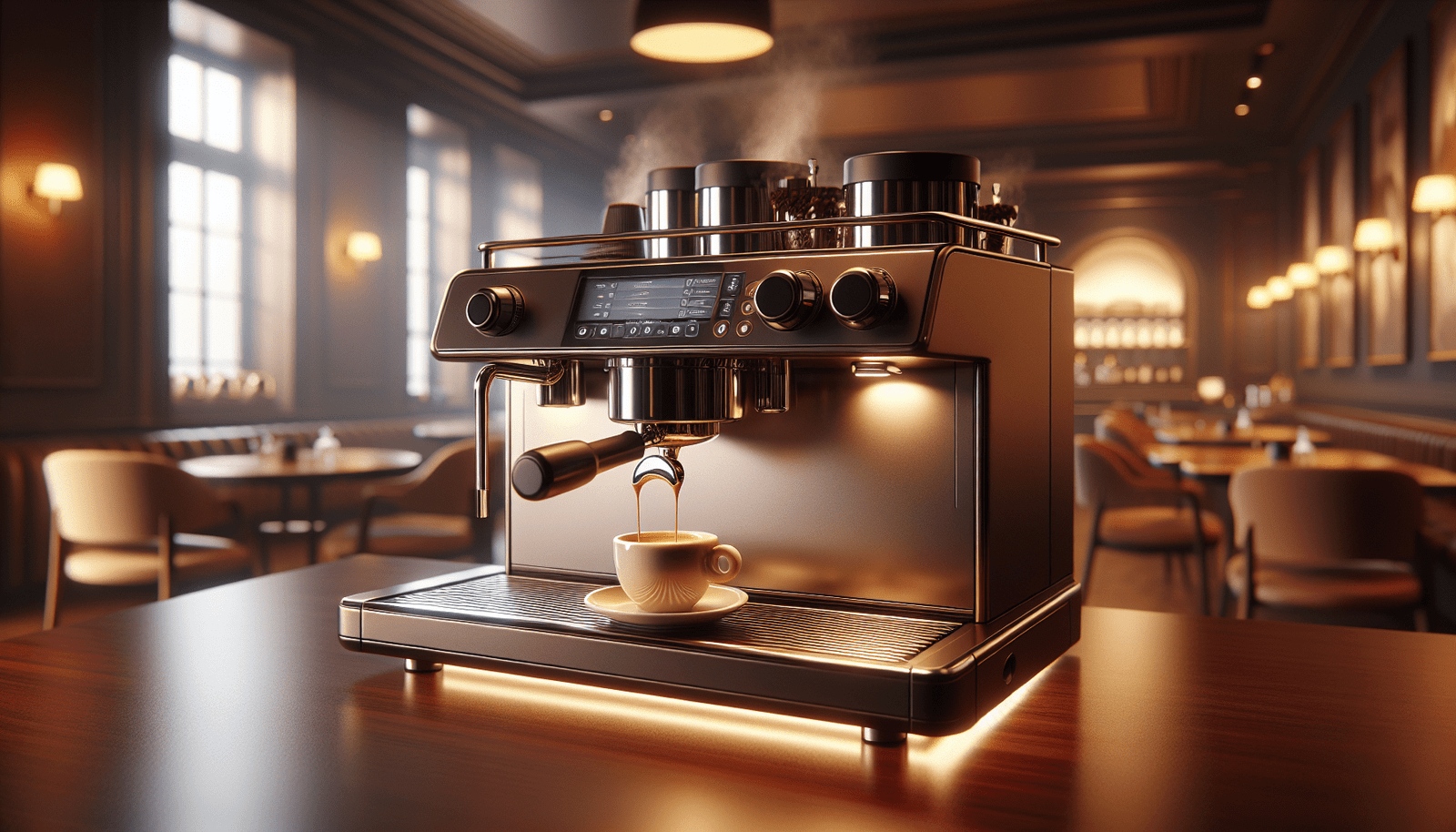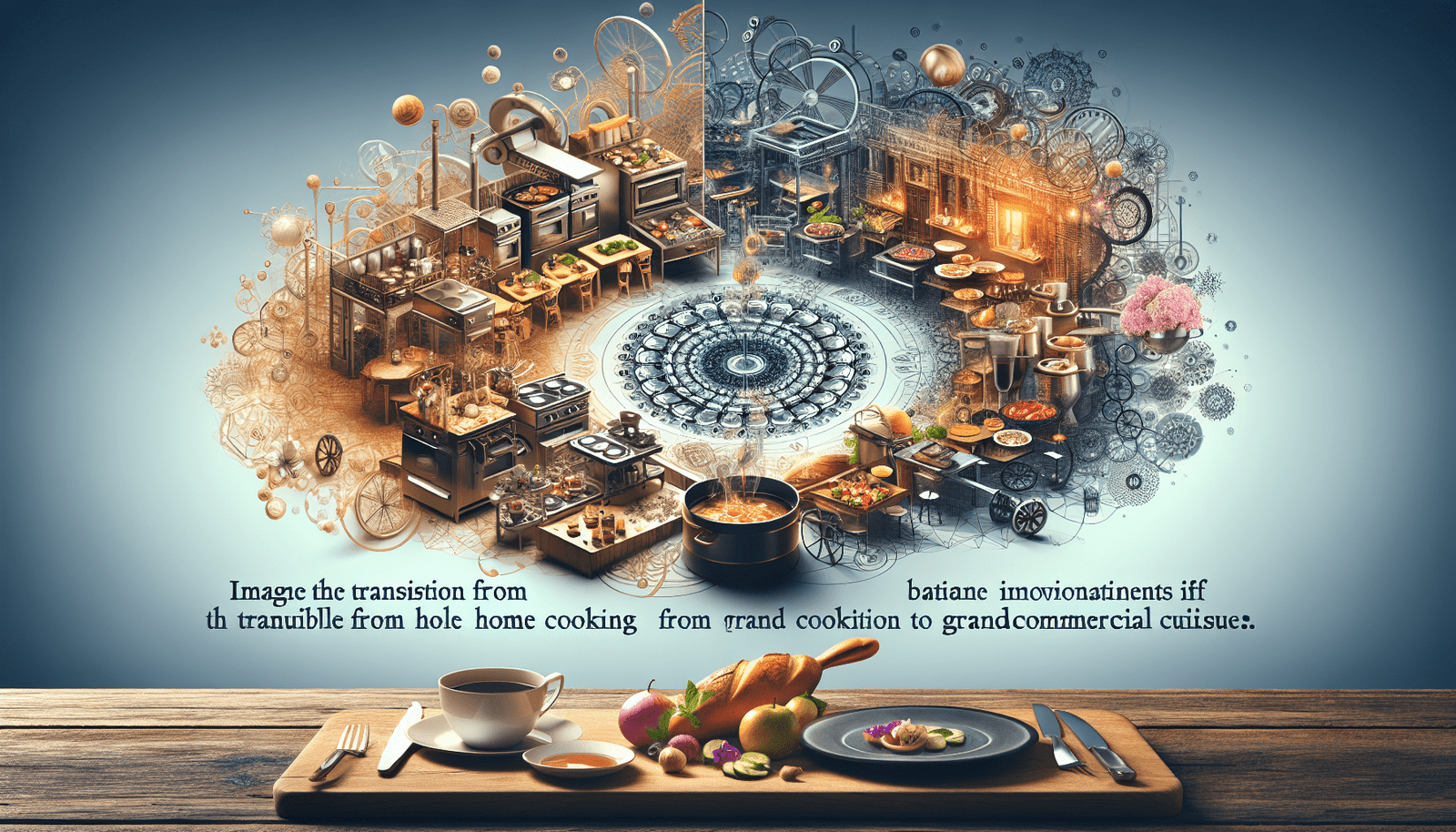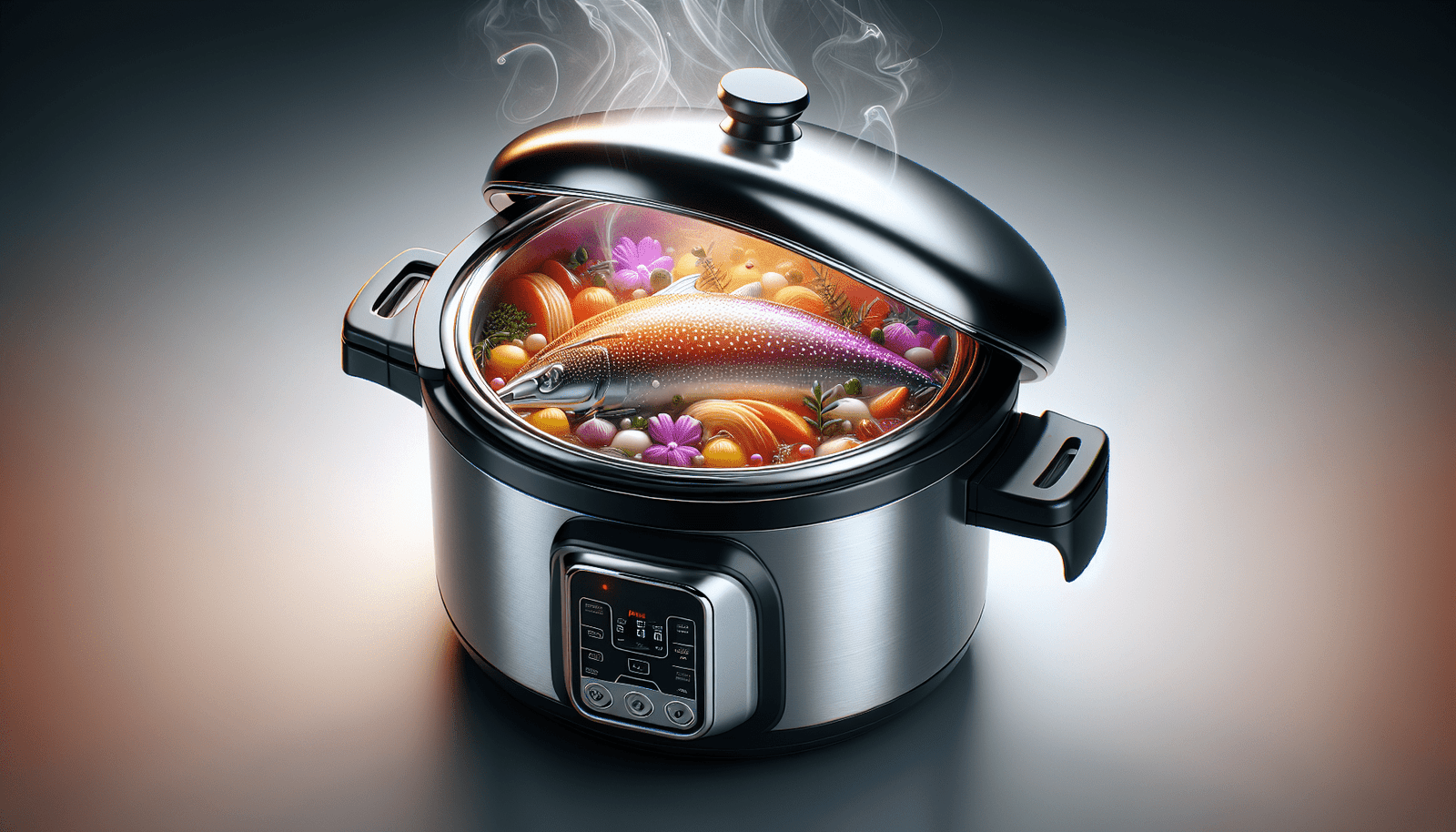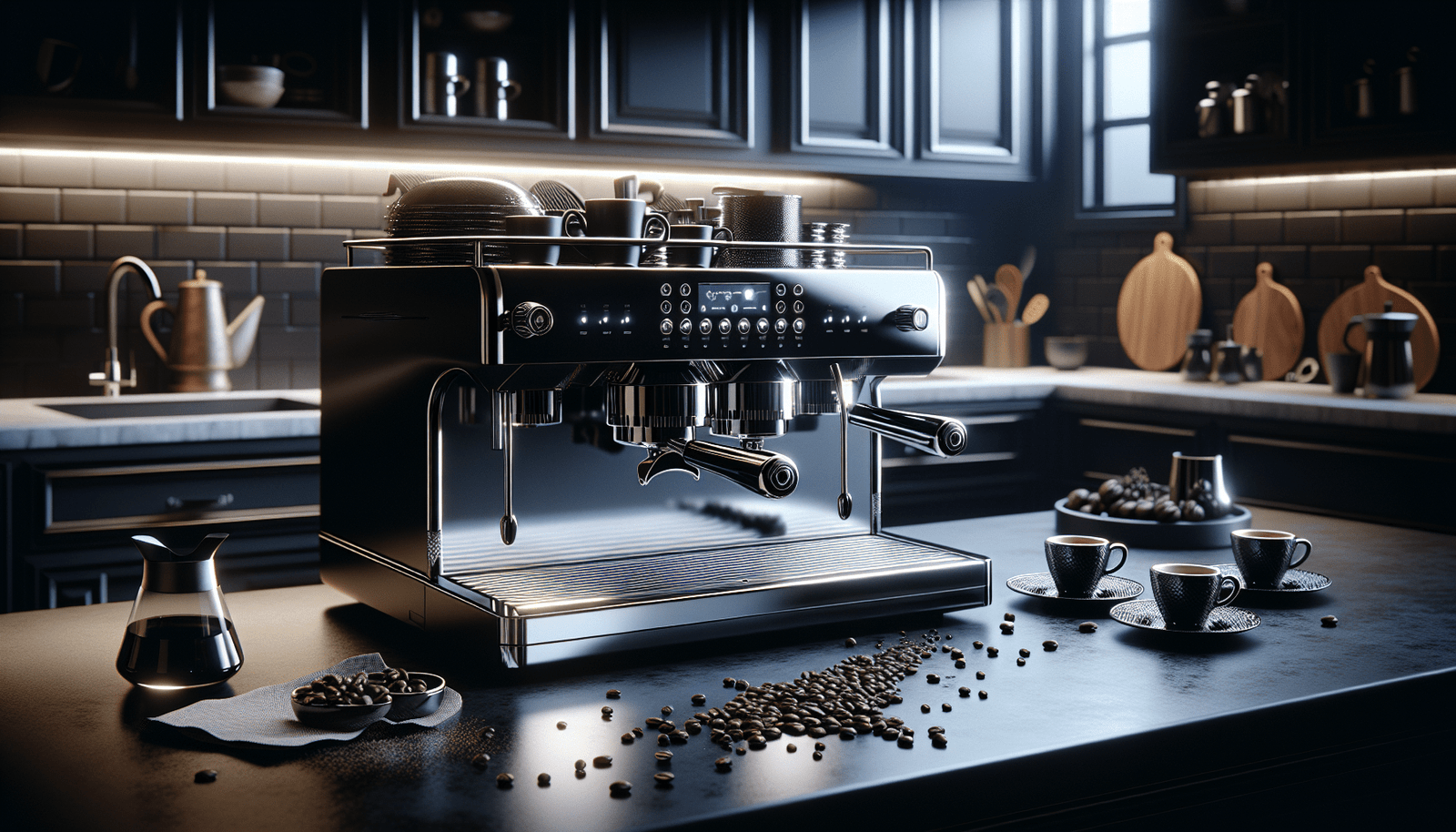Embark on a flavorful journey with “The Ultimate Guide to Commercial Espresso Machines,” your essential companion for navigating the bustling world of high-quality coffee brewing. Nestled within the rich repository of Cooking Appliance World, this guide serves as your key to unlocking the secrets behind selecting, operating, and maintaining the perfect espresso machine for your commercial venture. Whether you aim to charm the morning rush with velvety lattes or wish to end dinners with robust espressos, here, you will discover expert reviews, savvy tips, and exclusive deals that promise to elevate your coffee service to an art form. Transform your business and delight your clientele by mastering the craft and science of exceptional espresso, all with the help of your newfound guide.
Understanding Espresso Machines
Definition and basic operation
An espresso machine is your gateway to crafting the perfect shot of espresso – that rich, concentrated coffee beloved worldwide. At its core, an espresso machine works by forcing a small amount of nearly boiling water through finely-ground coffee beans. This process, often under high pressure, extracts the intense flavors, aromas, and essential oils that define espresso.
History of espresso machines
The journey of espresso machines began in the 19th century, but it wasn’t until 1901 that Luigi Bezzera invented the first true espresso machine in Milan, Italy. Initially designed to speed up coffee brewing at bars, the technology has evolved significantly. From steam-driven to piston-driven, and finally to the sophisticated electric pump-based machines we see today, each innovation has made espresso more accessible and delectable.
Types of espresso machines
Espresso machines come in various types, including manual lever, semi-automatic, automatic, and super-automatic. Each category offers different levels of control and automation, from manually pulling a shot with a lever to pressing a button and letting the machine do all the work. Your choice depends on the balance between convenience and the desire for a hands-on brewing experience.
Key Components of Espresso Machines
Boiler or thermoblock
A boiler or thermoblock is crucial for heating water to the precise temperature needed for brewing espresso and producing steam. Whether you have a single boiler, dual boiler, or thermoblock system affects your machine’s efficiency to brew and steam simultaneously.
Portafilter and basket
The portafilter, attached to the group head, holds the basket containing the ground coffee. An essential piece in the puzzle – it’s where the magic begins. The ground coffee’s size, amount, and tamp pressure affect the extraction and, ultimately, the taste of your espresso.
Group head
This component attaches the portafilter to the machine and is a critical point where hot water dispenses into the coffee grounds. The group head ensures the water is distributed evenly for optimal extraction.
Steam wand
A steam wand lets you froth milk to a velvety texture, essential for cappuccinos and lattes. Mastering the steam wand can elevate your espresso-based drinks to barista-quality standards.
Pressure system
Most espresso machines operate at 9 bars of pressure, the golden standard for extracting espresso. However, pressure profiling, which allows variable pressures throughout the extraction, is a feature in some high-end models for a customizable brewing experience.
Water source and filtration
Good-quality water is pivotal for excellent espresso. Many commercial machines connect directly to a water supply and include filtration systems to ensure the water quality is consistent and free of impurities that could affect taste.

Types of Commercial Espresso Machines
Semi-automatic espresso machines
Semi-automatic machines are a favorite in many cafes. They automate the water flow but give you control over grinding, tamping, and the extraction time, presenting a balance between automation and hands-on brewing.
Automatic espresso machines
Automatic machines take a step further by controlling the water flow and extraction time, ensuring consistent shots of espresso every time. They’re ideal for busy environments where efficiency without sacrificing quality is key.
Super-automatic espresso machines
For utmost convenience, super-automatic machines grind, tamp, brew, and sometimes even froth milk at the touch of a button. They’re superb for high-volume settings or places without trained baristas.
Manual (Lever) espresso machines
Lever machines offer the most traditional and hands-on approach, where you manually control the pressure and water flow through a lever. It’s all about the craft and skill, appealing to espresso purists.
Advantages and disadvantages of each type
Each type of machine caters to different needs, from the precision and control offered by manual and semi-automatic machines to the convenience and consistency of automatic and super-automatic models. Consider what’s most important for your setup when choosing.
Selecting the Right Machine for Your Business
Understanding your business needs
Identify what your business uniquely requires from an espresso machine. Consider your menu, volume of customers, and the skill level of your staff. This understanding will guide you towards a machine that meets your operational demands.
Evaluating your space and capacity requirements
Space and power capacities matter just as much. Assess how much room you have and what kind of power supply is available. Make sure the machine fits physically and that your infrastructure can support its operation.
Considering your budget
Espresso machines can be a significant investment. Your budget will influence the type and features of the machine you can afford. Remember to factor in not just the initial cost but also long-term expenses like maintenance and accessories.
Anticipating future growth and adaptability
Choose a machine that not only meets your current needs but also has the capacity to scale with your business. Flexibility to add features or upgrade components can save you from needing a complete replacement as your business grows.

Features to Look for in Commercial Espresso Machines
Durability and build quality
A robust machine built from high-quality materials can withstand the rigors of commercial use and last many years. Reliable construction reduces the frequency and costs of repairs.
Ease of use and training requirements
Consider how user-friendly the machine is for your staff. Machines that are intuitive and easy to learn can reduce training time and increase consistency in your coffee quality.
Temperature and pressure stability
Consistency is critical in espresso extraction, and machines that offer stable temperature and pressure ensure that each cup of coffee is as perfect as the last.
Maintenance and cleaning ease
Daily maintenance and cleaning are essential for the longevity of your machine and the quality of your espresso. Look for machines that facilitate these tasks with easily accessible components.
Availability of replacement parts
Eventually, parts will wear out. Ensure that replacements are readily available and not overly expensive. It helps keep maintenance costs manageable over time.
Popular Brands and Models
Comparing top manufactures
Exploring different manufacturers gives insight into the range of options available. Brands like La Marzocco, Nuova Simonelli, and Rancilio are renowned for their quality and innovation in espresso machine design.
Reviewing noteworthy models for various business sizes
Whether you’re a cozy café or a bustling restaurant, there’s a machine tailored to your size and throughput. Reviews and comparisons can help identify which models have the best reputation for reliability, ease of use, and quality of espresso among businesses similar to yours.
Customer and expert reviews
Don’t overlook the value of customer and expert reviews. They provide real-world insights into how the machines perform day-to-day, highlighting both their strengths and potential issues.
Installation and Initial Setup
Planning for water and power requirements
Before installation, confirm your establishment can meet the water and power specifications of your new espresso machine. This might involve upgrading plumbing or electrical systems to accommodate the machine’s needs.
Professional installation vs. DIY
While some smaller machines are plug-and-play, professional installation is recommended for most commercial machines to ensure they are set up correctly and safely. It may also be a requirement for maintaining the warranty.
Initial calibration and testing
Once installed, the machine needs to be calibrated and tested to ensure it operates at optimal settings. This might involve adjusting the grinder, pressure, and temperature settings to match your preferred espresso profile.
Maintenance and Cleaning
Daily cleaning routines
Establishing a daily cleaning routine is essential for maintaining both machine performance and coffee quality. This includes backflushing the group heads, cleaning the steam wand, and emptying and washing the drip tray.
Preventative maintenance schedule
Beyond daily cleaning, your machine will require regular maintenance checks and replacements of wearable parts like gaskets and filters. Setting a preventative maintenance schedule helps avoid unexpected breakdowns.
Handling common issues and troubleshooting
Familiarize yourself and your staff with troubleshooting common issues, such as blockages or inconsistent pressure. Quick on-site fixes can keep your machine running smoothly without always needing to call for professional help.
When to call a professional for service
However, some issues will require professional service. Knowing when to call in an expert can save you time and prevent further damage to your machine. Regular servicing can also preempt issues and extend the lifespan of your machine.
Training Baristas and Staff
Essential skills for operating espresso machines
Effective training ensures your staff can consistently produce high-quality espresso. Focus on fundamental skills, including grinding, dosing, tamping, and milk frothing, as well as routine maintenance.
Creating a training program
A structured training program, possibly including certifications, can raise the overall skill level of your staff and ensure consistency across your team. Regular refresher courses can also help keep skills sharp.
Maintaining consistency in espresso quality
Consistency is key to customer satisfaction. Encourage practices that promote consistency, like using a scale for dosing and a timer for extraction. Regular taste testing can also help staff calibrate their techniques.
Advanced barista techniques and certifications
For those looking to take their craft to the next level, advanced barista techniques and certifications can deepen understanding and skill. These may cover latte art, coffee tasting, and understanding coffee origins and processing.
Future Trends in Espresso Machine Technology
Innovations in machine automation and efficiency
The future of espresso machines lies in technology that further simplifies operation while enhancing the quality of the espresso. Innovations in automation, temperature control, and pressure profiling promise even more consistent and customizable coffee experiences.
Sustainability and eco-friendly features
Sustainability is becoming increasingly important. Future machines may feature more energy-efficient designs, recyclable materials, and systems that minimize waste, aligning with the growing demand for environmentally friendly practices.
Smart technology integration and IoT in espresso machines
Expect smart technology and the Internet of Things (IoT) to play a bigger role. From remote management and diagnostics to integration with other devices, smart technology will make espresso machines more adaptable, efficient, and integrated into the digital world.


